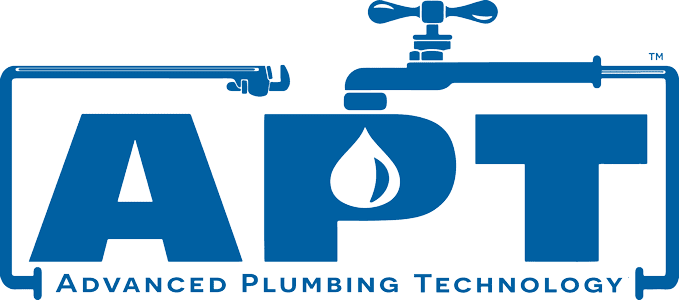Plumbing Problems 101: Common Issues and How to Address Them
September 26th, 2023Posted by Brian Shoemaker
Plumbing Woes – An Inevitable Household Challenge
In the realm of homeownership, few challenges are as universal and daunting as plumbing issues. A leaky faucet here, a clogged drain there – plumbing problems have an uncanny ability to disrupt our daily lives. From a minor inconvenience to a major catastrophe, plumbing issues come in all shapes and sizes. However, armed with a bit of knowledge and a willingness to troubleshoot, many of these problems can be resolved without having to summon a professional plumber. In this article, we’ll delve into the world of plumbing problems, exploring some of the most common issues that homeowners face and providing practical solutions to address them.
Identifying the Culprit: A Leaky Faucet
The Annoyance: The incessant drip-drip of a leaky faucet is more than just an auditory irritant; it’s also a water-wasting menace that can escalate your utility bills and harm the environment.
The Cause: The primary cause of a leaky faucet is a worn-out washer within the faucet assembly. Over time, this small rubber component deteriorates, leading to water seepage.
The Fix: Start by turning off the water supply to the faucet. Carefully disassemble the faucet, replacing the old washer with a new one. Ensure you turn off the water supply and follow the manufacturer’s instructions for your specific faucet model. If you’re not comfortable with this DIY repair, consulting a professional is a wise choice.
A Flood of Frustration: Dealing with a Clogged Drain
The Annoyance: Slow-draining sinks, showers, or tubs can quickly escalate from minor nuisances to major inconveniences. Left unattended, they can lead to standing water and unpleasant odors.
The Cause: Clogs are typically caused by a buildup of hair, soap residue, food particles, or grease in your pipes. These materials accumulate over time, obstructing the flow of water.
The Fix: Before resorting to harsh chemical drain cleaners, try using a plunger to dislodge the clog. If that doesn’t work, consider a natural solution: mix equal parts of baking soda and vinegar and pour it down the drain, followed by hot water. For stubborn clogs, a drain snake (also known as an auger) can help break up the debris. Regularly using drain covers to catch debris can also prevent future clogs.
Running Toilet Woes: Putting an End to Constant Running
The Annoyance: The sound of a continuously running toilet is not only bothersome but can also lead to a significant waste of water, increasing your water bill.
The Cause: A running toilet is often caused by a faulty flapper valve or a malfunctioning fill valve. These components are responsible for regulating the flow of water from the tank to the bowl.
The Fix: Start by removing the lid of the toilet tank and inspect the flapper and fill valve. If the flapper is warped or damaged, it’s an inexpensive and straightforward fix to replace it. If the fill valve is the culprit, adjusting the water level or replacing the fill valve might be necessary. Remember to turn off the water supply to the toilet before making any repairs.
Drip, Drip, Drip: Tackling a Leaky Pipe
The Annoyance: Leaky pipes can cause damage to your walls, floors, and belongings, not to mention the potential for mold growth.
The Cause: Leaky pipes can result from corrosion, excessive water pressure, or even accidental damage.
The Fix: If you discover a leak, the first step is to turn off the water supply to the affected area. Temporary fixes can be achieved by using plumber’s tape or a pipe clamp, which can help contain the leak until a permanent solution is implemented. For more extensive leaks or if you’re unsure about the repair process, don’t hesitate to consult a professional plumber to prevent further damage.
The Dreaded Low Water Pressure: Finding the Source
The Annoyance: Insufficient water pressure can make even the simplest tasks, like showering or washing dishes, frustratingly time-consuming.
The Cause: Low water pressure can be attributed to a variety of factors, including mineral buildup in the pipes, a partially closed shut-off valve, or even a municipal water supply issue.
The Fix: Begin by checking if the low pressure is affecting both hot and cold water. If it’s isolated to one fixture, cleaning or replacing the aerator might help. If the issue affects the entire household, consider checking the main shut-off valve to ensure it’s fully open. If none of these solutions work, it might be time to consult a professional plumber who can diagnose the issue and recommend appropriate action.
Navigating Plumbing Woes with Confidence
Plumbing problems are an inevitable part of homeownership, but they don’t have to be overwhelming. By understanding the common issues that can arise and learning how to troubleshoot them, you can save both time and money. Remember that while some repairs can be tackled with a DIY approach, it’s essential to know your limits. If a plumbing problem seems beyond your expertise, don’t hesitate to call in a professional plumber to ensure the issue is resolved correctly and prevent further complications. With a little know-how and a proactive attitude, you can navigate the world of plumbing with confidence, keeping your home’s systems flowing smoothly for years to come.
